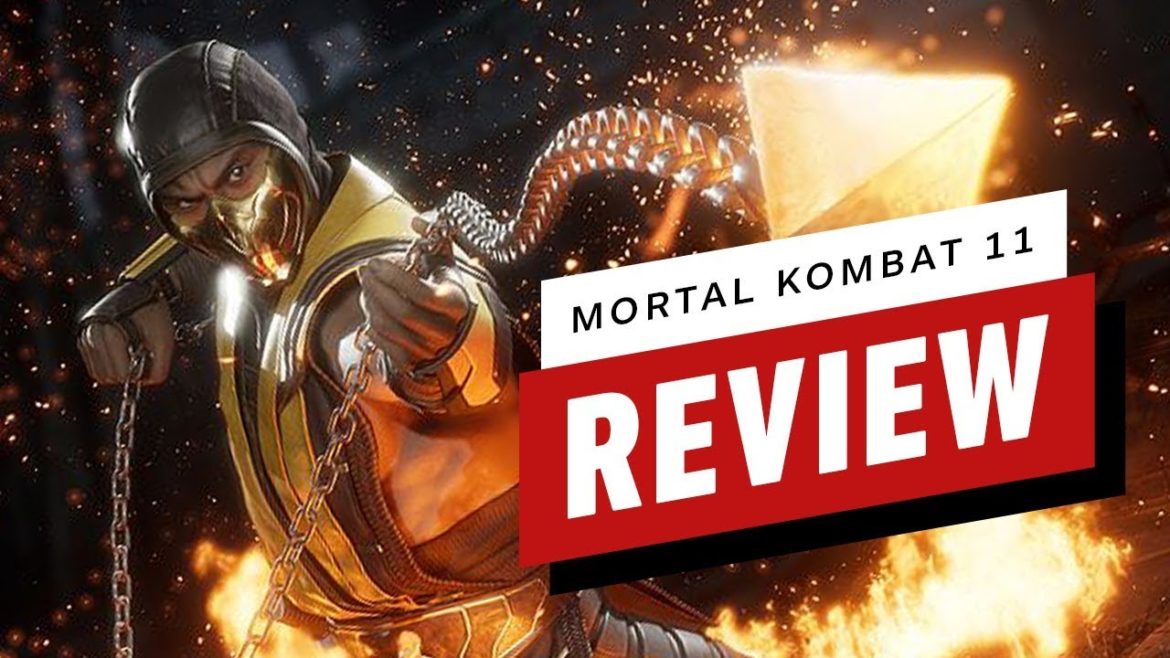
The new big bad in Mortal Kombat is named Kronika, and she’s causing a ruckus by messing with time and rewriting history. Characters are getting erased or colliding with their past selves, while alliances are reverting and new ones are being made–it’s the kind of chaos that’s ripe for conflict. Nothing that happened with Mortal Kombat before really matters anymore; the series is giving itself a clean slate, and not just with the lore in the story. NetherRealm’s multifaceted fighting system has been streamlined, and comprehensive tutorials and practice functions are focussed on making sure no matter where you’re coming from, you’re well-equipped to dive deep into Mortal Kombat 11.
It’s hard not to get excited about the story mode in a NetherRealm game given the studio’s history of crafting involved narratives, and Mortal Kombat 11 unsurprisingly delivers an entertaining and polished blockbuster-style cinematic experience with its tale of Kronika’s time-bending antics. Combat is woven in with a number of cutscenes, though you’ll probably spend more time watching well-choreographed action rather than participating. But the story is a great primer for some of the series’ more popular characters nonetheless, and the joys of Kronika’s time manipulation means that even if you’re a passing fan and aren’t up-to-date with all of the wacky stuff that’s happened in the universe lately, you can still get a kick out of seeing classic versions of familiar faces, who are just as baffled as you about what’s happened to their future selves since.
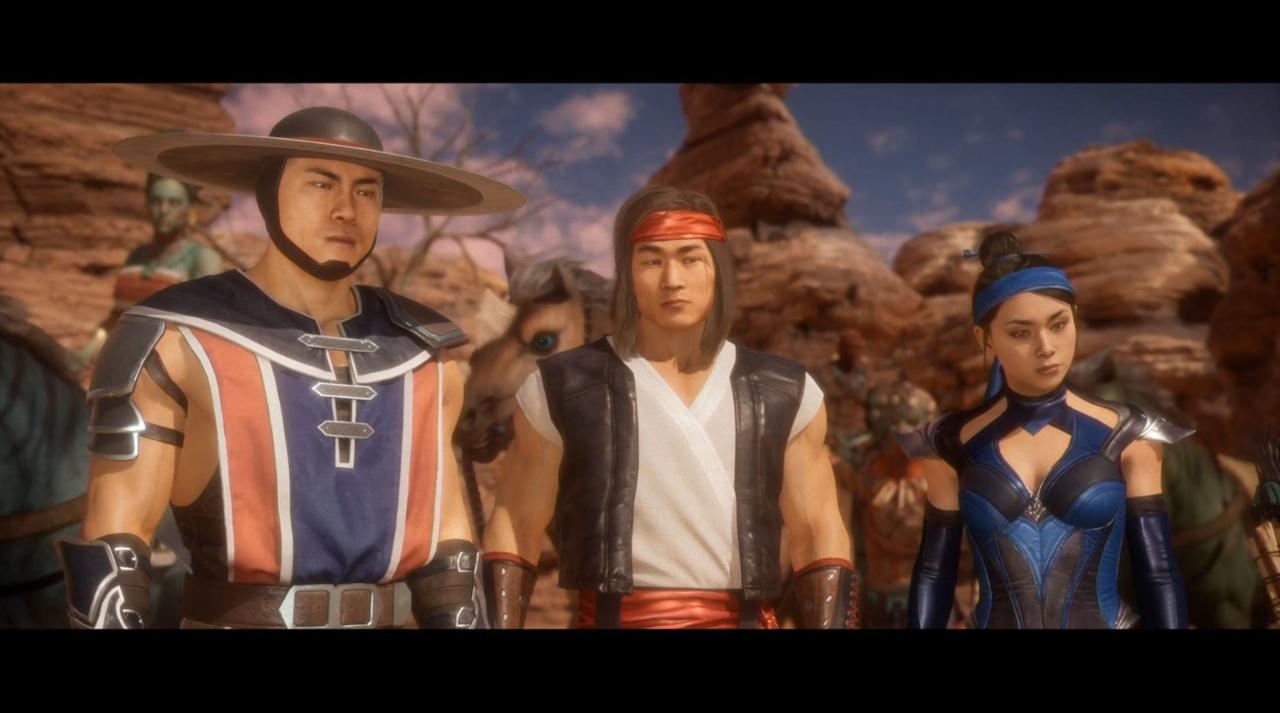










Watching the character interactions between young and old selves are a highlight, and with the exception of a somewhat flat Sonya Blade, the solid performances are endearingly sincere with some unexpected moments of introspection. By the time it ended I was eager for more–more of Johnny Cage being embarrassed by his younger self, more of the bromance between Liu Kang and Kung Lao, the sappy dynamic between parents and children. But the story mode hits that perfect balance of being just enough and not overstaying its welcome. The plot conceits are regularly ridiculous, especially when family members and lovers get into fatal tiffs, but it’s a delightfully bombastic and outlandish visual spectacle if nothing else.
Mortal Kombat 11’s eclectic roster includes a solid selection of the series’ iconic fighters, along with some of the great additions from Mortal Kombat X, like gunslinger Erron Black and the grotesque insectoid D’Vorah. Three brand new characters do their best to help the lineup branch out–Geras is an imposing heavy with the ability to rewind and manipulate time, Cetrion is an elder god with flashy elemental projectiles, the Kollector has a wonderfully unsettling and bamboozling six-armed demonic design–and they all add an inspired diversity to the familiar roster of magical ninjas and military hard-asses. Character variations also help to keep things diverse. A returning concept from Mortal Kombat X, each character can select between different sets of special moves that alter their playstyle. You can now customize these loadouts in MK11, but only two predetermined movesets are acceptable for serious competitive play. Even so, it means there are a few things to consider when picking which fighter to use.
Some key changes streamline the mechanics of MK11, resulting in a fighting system that feels more active and aggressive than its predecessors. The special meter system has been simplified, allowing for amplified maneuvers to be used at almost any time–gone is the idea of needing to hold back and save up two or three bars of a meter to perform a particular kind of technique. Separate meters for offensive and defensive techniques, along with rapid recharge rates, mean they can be used more liberally, too. “Fatal Blows” replace MKX’s X-Ray techniques, serving as a last-ditch comeback mechanic that can be activated once per match when your health is nearly depleted, adding a heightened tension when things get down to the wire. Significant block damage discourages you from being overly defensive, while learning the perfect-timing demands of the “flawless block” system is encouraged to mitigate some damage and open up turnabout opportunities. Running and stamina meters have been removed and dash distances feel shorter, honing MK11’s focus on always being within striking distance of your opponent. All of these tweaks mean there is rarely a low moment in a Mortal Kombat 11 fight.
If you’re new to the series, learning all those intricacies of the fighting system, special moves, and combo strings for characters can be intimidating. Fortunately, Mortal Kombat 11 does a lot to help onboard you to almost all of its concepts. Following the good work seen in Injustice 2, Mortal Kombat 11 features a comprehensive series of fantastic practical tutorials, with everything from teaching you basic attacks to more advanced lessons on managing the ebb and flow of a match, strategies on how to change or maintain the dynamic of a fight (like dealing with corners or projectile spam), and how to approach building your own combos. What’s more, there are also a series of tutorials that succinctly break down expert-level concepts, such as one that shows you what frame data is and how it works in clear, visual terms. Not only that, there are lessons on how to interpret that information and use it in a practical scenario–it’ll teach you what makes a move “safe” or “unsafe,” how to create pressure in a fight, and even how to perform frame traps. It’s an impressive resource that doesn’t just give you a better understanding of Mortal Kombat 11’s systems, but a deeper understanding of fighting game mechanics in general–knowledge that you can take to any other title.
Character-specific tutorials exist, too, and are more than just a simple rundown of all available techniques. These helpful lessons focus on the most useful and practical abilities and combos for a particular character and give you suggestions on when to use them, the pros and cons of doing so, and what you could follow up with. Furthermore, the in-game move lists are incredibly comprehensive, providing all sorts of helpful data for each move’s properties, so you can easily discern something like which of your character’s moves has the quickest startup. It’s valuable information and knowledge that NetherRealm has been building upon in its last few games and is presented at its best in MK11. Of course, if you’re the kind of player that couldn’t care less about the advanced stuff and just wants to jump in and see blood spilled, Mortal Kombat 11 can certainly be just as entertaining. Predetermined combo strings, flashy special moves, and humorously over-the-top barbarity means that the game is a joy to watch and participate in, whether the players are just messing around or taking it seriously.
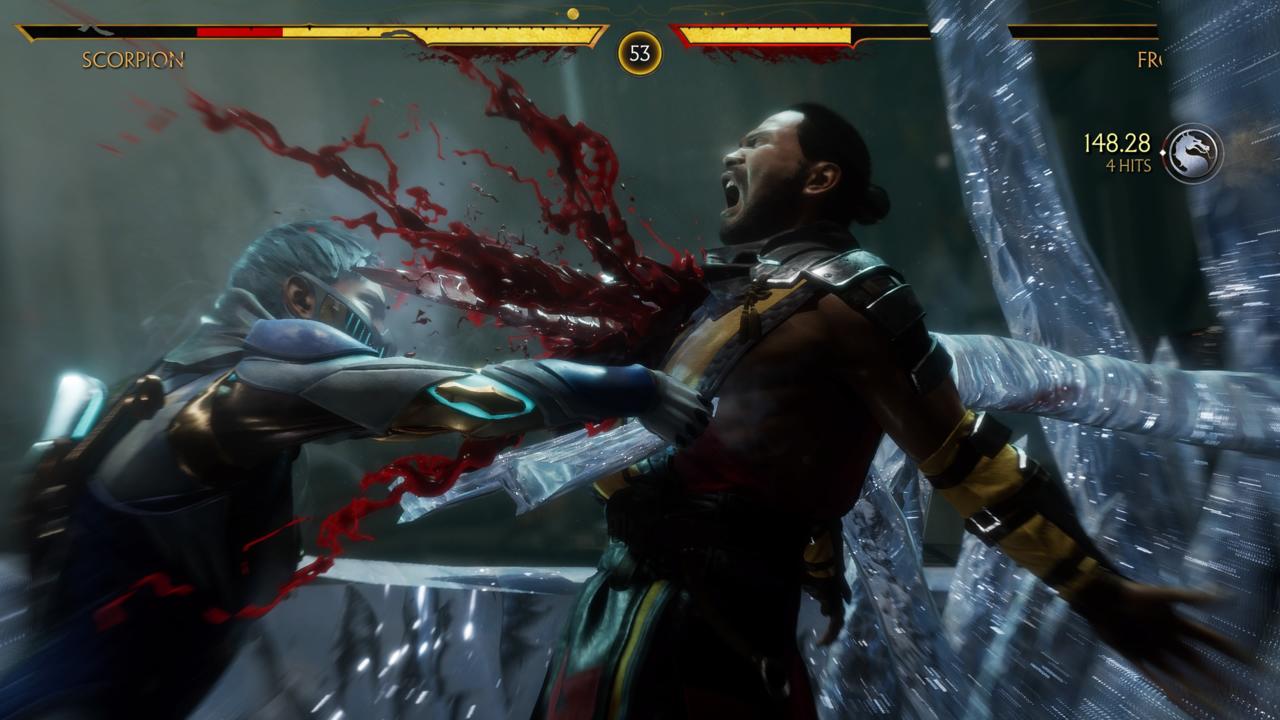










In addition to the game’s story mode, MK11 sees the return of Klassic Towers, a more straightforward single-player mode where you fight a series of opponents before eventually facing big boss Kronika. But the real meat of the single-player offering is the Towers Of Time, MK11’s version of the limited-time ladders seen in other NetherRealm games, which feature unique modifiers that can affect the playing field, combatants, and mechanics.
When our review-in-progress was first published, the balance of difficulty seen in the Towers Of Time was in such a state that the odds were always stacked against you–negative environmental modifiers only affected you and not your opponent, AI difficulty was relentlessly high, opponents were more robust, and as a result the challenges often felt horribly cruel and unbalanced. The mode’s focus on using “Konsumables,” a variety of limited-use items that you can equip and activate during the fight, did little to even the playing field, and their method of attainment was too dependent on luck to even make them a reliable strategy in the first place. In fact, the drip-feed of rewards you received from completing towers were overall too meager (and random) at the game’s release to justify the amount of effort they demanded.
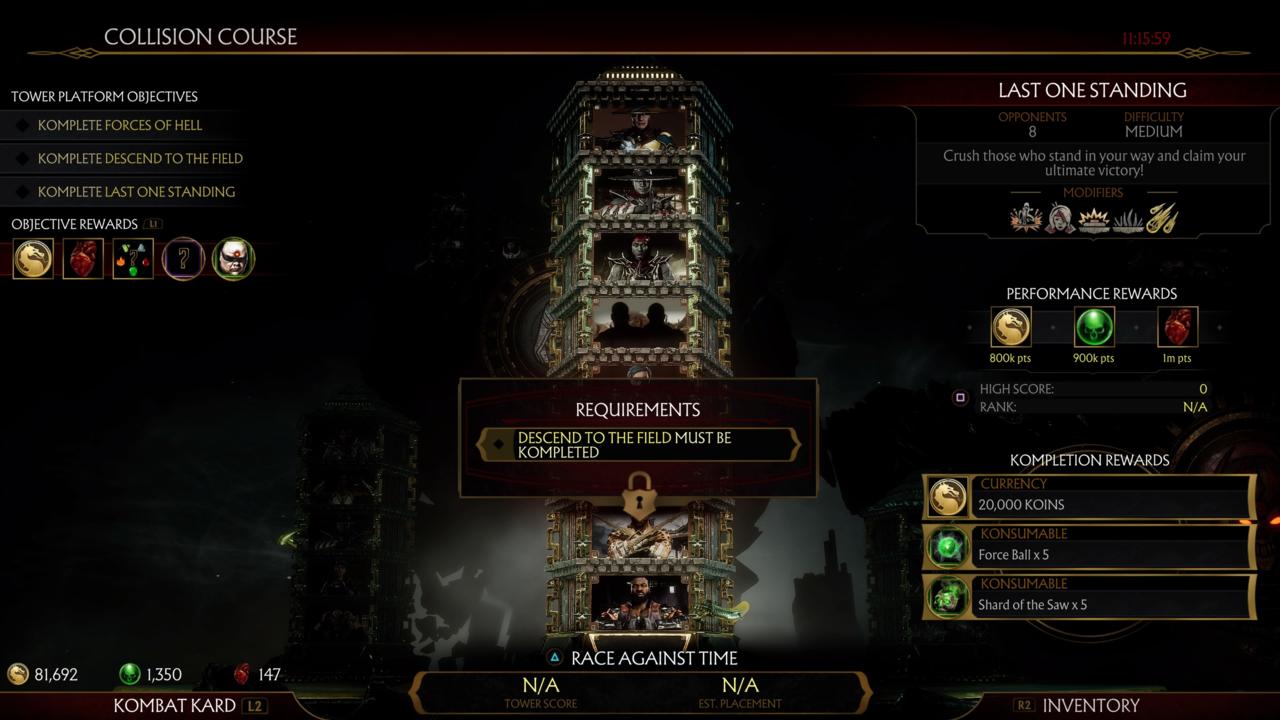










One week later, NetherRealm released a major patch (1.03) that acknowledged and adjusted a large number of variables related to the Towers of Time, reducing (and in some cases, eliminating) a number of unbalanced modifiers, normalizing the resilience and difficulty of AI opponents, and increasing the amount of rewards for completing activities across the board. That’s fortunate, because the modifiers in the Towers of Time add genuinely interesting dynamics to MK11’s already enjoyable fighting flow. One tower might pit you against a series of fighters who can poison you if they get a string of hits in, another might place a totem in the middle of the stages that electrocute whoever is standing closest. Other towers might team you up with two or three other online players to take down a particularly hardy “boss” fighter, letting you tag each other in, or perhaps assist the active fighter with Konsumables.
These kinds of challenges are a welcome exercise that push you to consider different ways to approach a MK11 fight, forcing you to, say, become extra defensive or keep a closer eye on your positioning. The variety of Konsumables–which have abilities that range from letting you call in another character to perform an assist attack, rain missiles down from the sky, or simply replenish your health–can give you extra tools to help keep a handle on the situation. But, in my experience after the 1.03 patch, using Konsumables isn’t strictly necessary, so long as you’re playing diligently.
As they stand at the time of writing, the Towers of Time succeed in providing an endless, compelling palette of single-player content to tackle once you’ve completed the story mode. The difficulty curve and number of challenges you need to tackle are reasonable enough that achieving the prizes at the end of a tower, and the end of a whole island of towers, always feels within reach. What was previously a frustrating experience at launch is a compulsive one a week later. Even the demanding boss fight-style challenges only ask you to endure one round before showering you with the payouts on offer. They’re enticing pools of goods, too–the aforementioned Konsumables, character cosmetics, and large denominations of the various currencies needed to open chests in the Krypt, MK11’s third-person quasi-puzzle-adventure mode designed for unlocking even more collectibles.
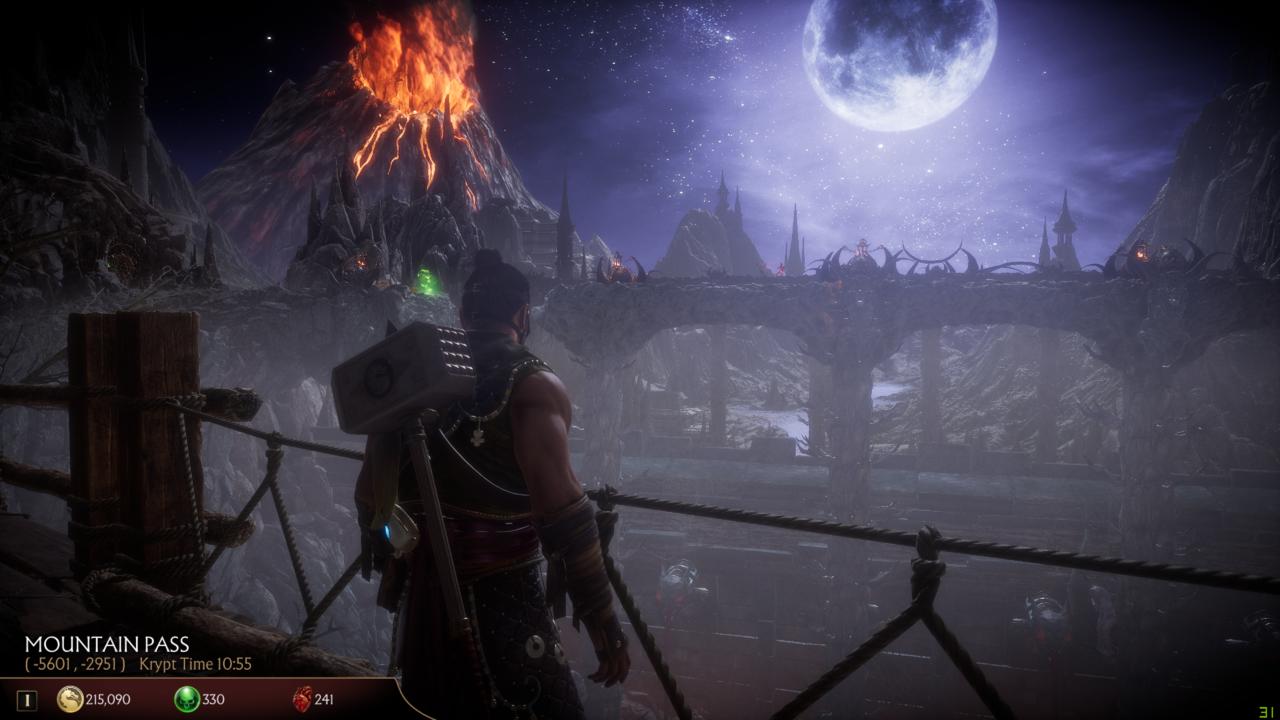










The Krypt in Mortal Kombat 11 is a completely reimagined recreation of Shang Tsung’s island, the location of the very first Mortal Kombat game from 1992. Exploring the location, which involves finding items to open up paths to new areas, is an exciting experience in itself–there’s a basic joy in simply taking in the visual splendor of certain locations, especially if you retain any memories of Mortal Kombat’s stages (although it should be noted that the Nintendo Switch version is noticeably less visually splendorous). A mess of treasure chests litter the island, requiring one of three different currencies to open them, but the catch is that aside from chests that require “Hearts,” the rewards you get seem to be completely randomized. Regardless of their asking price, chests have the capacity to furnish you with something exciting, like new costumes or brutality finishers for a specific character, or something as basic as a piece of concept art. It can be a bummer to come away from a Krypt session with nothing of value for your favourite fighter, but it’s at least heartening to know that the game doesn’t have any avenues to let you spend real-world money to open more chests, and that your pool of currencies will continue to grow at a steady, reasonable rate by simply playing the game.
Now, it’s pertinent to mention that Mortal Kombat 11 relies on a persistent online connection to keep track of progression in every single mode. Naturally, being offline means that you can’t access the game’s rotating Towers of Time, but it also means you won’t get rewarded for playing the story mode or tutorials until you reconnect. In most cases, given the ever-connected nature of PCs, PS4s, and Xbox Ones, this aspect should rarely present any major issues, but it certainly can. There was one instance where game servers went down on all platforms, and I lost my progress on a Tower of Time. Losing progress can also be an issue if, for example, you duck out to your console’s dashboard to share a video clip of a close victory, which will suspend your game and disconnect you from its servers. The always-online nature of the game can pose a much larger concern on Nintendo Switch, however, especially if you’re looking to play the game in handheld mode away from a wireless connection. Even if you’re content to simply hang out in practice mode or play a standard tower on the train, you’ll be hounded by network error messages every step of the way.
There are a range of online multiplayer modes, of course, including ranked and casual matchmaking, a king-of-the-hill mode, and forthcoming ranked seasons, as well as private options like lobbies and the ability to use practice mode with a friend. MK11 also features tools that help you have some control over your experience–in casual matches, you have the ability to see your opponent’s win/loss ratio, your estimated chance of success, and information about each player’s internet connection–and the game thankfully allows you to decline a match if you think you’re going to have a bad time. I encountered no major issues with online play during the game’s first week, and found matchups to be fairly even in most cases, meaning fights were often heart-poundingly close. The robust online options make it a worthwhile avenue to pick a fight without the modifiers of the Towers Of Time.
MK11 isn’t just a sequel for series fans and NetherRealm devotees, it’s a gateway into the realm of fighting games for anyone who has a passing interest in watching ruthless warriors beat each other silly. Streamlined mechanics keep the act of fighting furiously exciting no matter what your skill level, and comprehensive tutorials encourage you to dig into the nitty-gritty. There’s a diverse roster of interesting characters and playstyles, and the story mode is an entertaining romp. The randomization of Krypt rewards and the odd issue with the game’s always-online nature can occasionally chip away at your patience, but Mortal Kombat 11 absolutely hits where it matters.




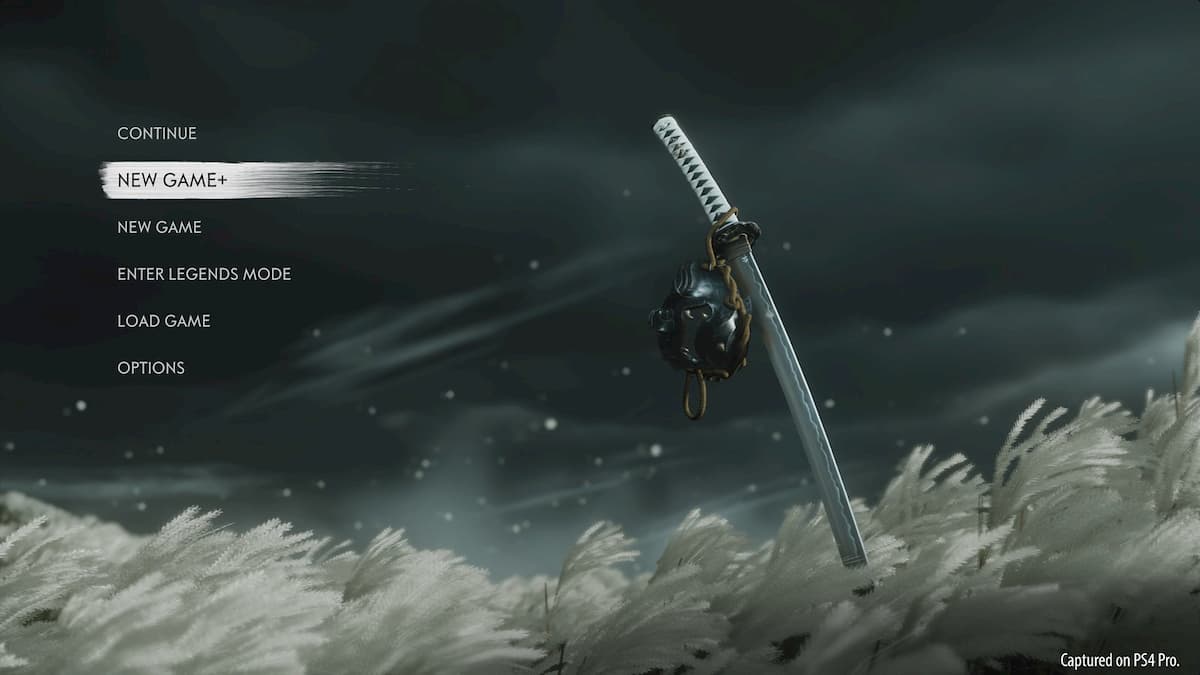


More Stories
Doom Eternal review
Review: The Last of Us Part II complicates the idea of right and wrong
Dirt 5 review